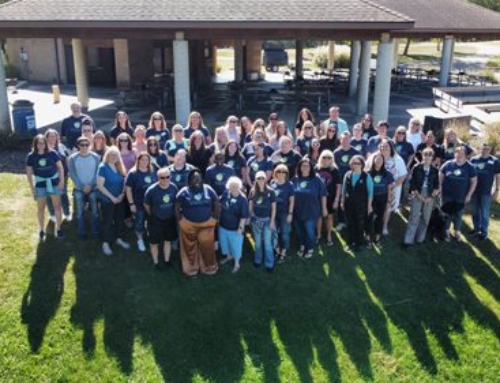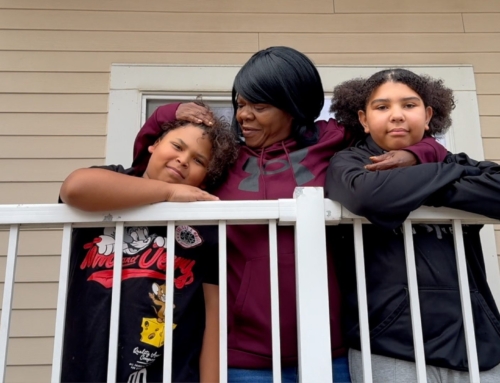by Carol Connelly
Sexual Assault Services Program Coordinator
Several years ago, Jules was laid off from a construction company. Her former supervisor, Frank, maintained communication with her and encouraged her to reapply when there was a new opening. She had been unemployed for 15 months when Frank advised her of a job opening. She applied and was rehired by Frank, but little did she know that he had ulterior motives.
After she began work, the single mother of two noticed her schedule was shifted so she was working later than others, her office was in an isolated location, she had been handed an unusually heavy workload, and she was often alone with her supervisor. One day, Jules walked with Frank five blocks from the company campus to one of the construction sites she supervised. With no warning, he pulled her into a room out of sight of windows, pushed her up against the wall, kissed her, undid her bra, and pulled down her pants. Jules froze and, in a state of shock, did not engage or scream. She was scared and humiliated.
Frank exploited Jules’ vulnerability as a single mom, desperate to keep her job, especially after being out of work for 15 months. Jules did not know what to do. She reasoned that since there was no penetration, that he didn’t technically rape her. So she did not go to the police.
Frank assaulted Jules on several more occasions and with each assault, he was more aggressive. Jules began telling coworkers about the assaults, from contractors to security, seeking advice but found little help. Some didn’t believe her story and disregarded her pleas for help and for holding the supervisor accountable for inappropriate actions. Others wanted to help her, but were afraid of losing their jobs. The stress of the assaults began taking a toll on Jules’ health. Her demeanor changed. She had bouts of depression and smiled very little.
April is Sexual Assault Awareness Month. Sexual violence is pervasive in our society and encompasses everything from verbal harassment to rape. Sexual violence can happen to anyone, anywhere and at any time. According to the Centers for Disease Control and Prevention, nearly 1 in 5 women and 1 in 71 men in the United States experience a rape in their lifetime.
A 2014 study conducted by the University of Minnesota and the Women’s Foundation of Minnesota says that in Minnesota:
- 1 in 3 Minnesota women have experienced a rape or attempted rape by mid-life.
- 12 percent of all seniors in high school reported a date-related sexual assault.
- On Minnesota college campuses, 1 in 4 female students have been sexually assaulted by the age of 23.
It is important to note that these statistics are endemic. That means they are predictable and represent the norm year after year. There are systems of oppression and power dynamics that support the existence of this level of sexual violence annually.
The US Department of Justice estimates that eight percent of rapes occur while the victim is working. Only about a quarter of rapes and sexual assaults were reported to police when compared to other violence crimes in the workplace. According to the Minnesota Department of Public Heath, in 2005 sexual violence in Minnesota cost an estimated $8 billion dollars in healthcare costs, justice system costs, lost wages, and much more. The internalized stress of Jules’ situation created problems with her digestive system and she required surgery to correct it.
One day, Jules confided in a female director at the company and explained what was happening to her. The director shared that she herself had been sexually assaulted decades earlier. She encouraged Jules to be the voice for the other women who had experienced similar assaults but kept silent, and to go to the Human Resources director with her information. Human Resources interviewed both Frank and Jules. Jules then filed a police report. Frank resigned but was hired back at the company a month later and Jules was moved to a remote office space, smaller and more cramped. Jules hired an attorney and eventually, Frank, his boss, and two other employees were forced to resign.
Frank was never criminally charged for his behavior. Unfortunately, Jules’ case is all too common. The burden of accountability is often placed incorrectly on the victim of the crime. For Jules, like many other survivors, disclosure was a process. Jules needed to work to be believed, she had to fight corporate incompetence in dealing with her complaints, and she had to seek out people of authority who she could trust to influence the outcome.
In the end, Jules has been forced to move forward without real justice while Frank has moved on to work at another company. But Jules is not defeated, she is a survivor. She recently attended 360 Communities’ Sexual Assault Advocacy Training so that she can empower other survivors.
Albert Einstein once said, “The world will not be destroyed by those who do evil, but by those who watch them without doing anything.” Together, let’s voice our opposition to all forms of sexual violence and change the social norms that allow sexual violence to occur in the first place.





